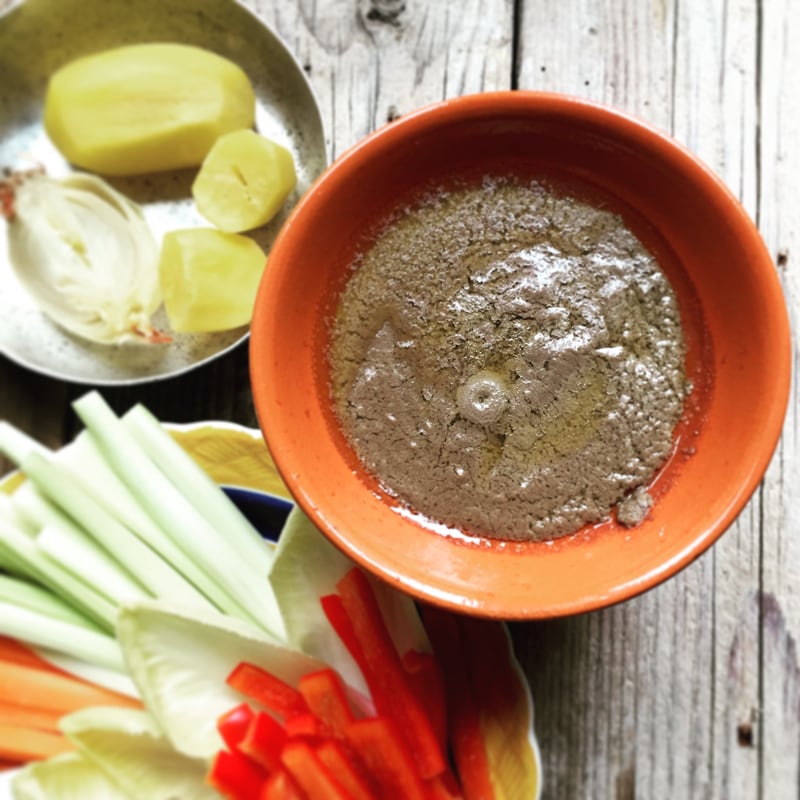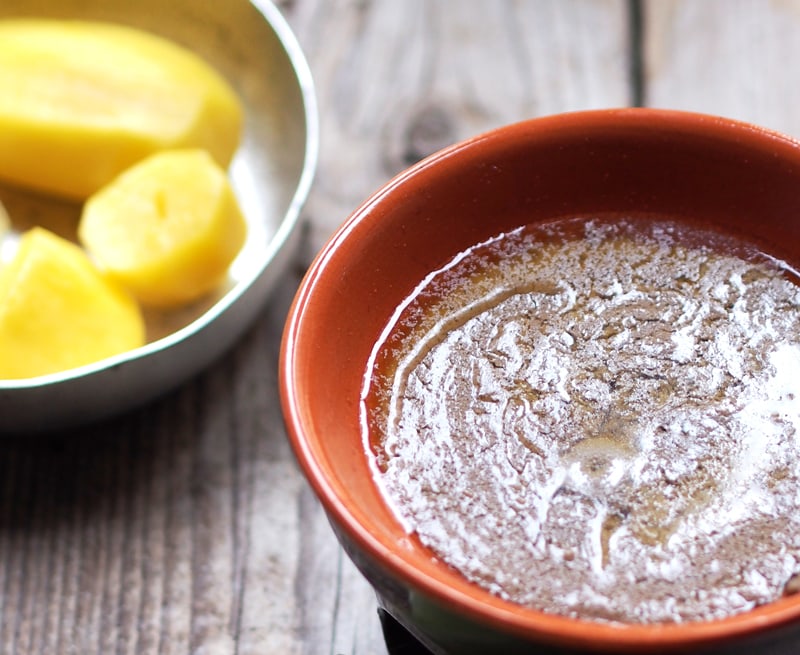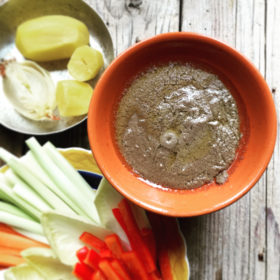Bagna cauda, or càoda (“hot dip” in Italian), is a typical product of Piedmontese gastronomy made with butter, extra virgin olive oil, garlic, and salted anchovies. It is traditionally served in special earthenware pans that keep the sauce hot.
This dish with a long history that, although it may seem from the ingredients poor and everyday, is actually a dish for special occasions, of conviviality. It is the dish of fraternity and joy that, according to tradition, is prepared for celebratory moments like the end of the harvest. Bagna cauda is a collective dish that serves to bring people together to celebrate the history and the land of Piedmont.

Although it is usually considered a generically Piedmontese dish, bagna cauda more specifically originates from the territory of Asti, the Langhe, Monferrato, Roero, the Provinces of Cuneo, Alessandria, and the territory that extends south of the city of Turin. Many towns in the region contend for the authorship of this true symbol of its gastronomy.
In reality, however, it seems that the origins of bagna cauda can be found in France, on the coast of Provence, with the name of anchoiade.
The territory of Asti, the Langhe, Monferrato, Roero, the Provinces of Cuneo, Alessandria, and the territory that extends south of the city of Turin all contend for the authorship of this true symbol of Piedmontese gastronomy. In reality, however, it seems that the origins of bagna cauda can be found in France, on the coast of Provence, with the name of anchoiade.
In the Middle Ages the merchants of Asti, during the journeys they made to stock up on salt and anchovies, encountered this extraordinary product and brought it home and introduced it along the routes of their trade that touched the whole territory of what is now southern and northwestern Piedmont. The passage to Italian land naturally involved an adaptation of the Provençal recipe, which was modified, for example, with the use of vegetables.


You can make bagna cauda in advance, but it’s best to eat it fresh. If you’re making it ahead of time, make sure to reheat it slowly so that the flavors don’t get lost. Bagna cauda is a great dish to bring to a party because it can be made ahead of time and served hot. Just make sure to keep an eye on it so that it doesn’t get too dry.
It is typically served as an appetizer with bread or vegetables for dipping. While there are many different ways to enjoy bagna cuda, here are some of the most popular accompaniments:
The answer is yes, you can freeze bagna cauda. In fact, freezing can actually help to preserve the flavor of the dish. However, there are a few things to keep in mind when freezing it. First, be sure to use a high-quality freezer bag or container. Second, make sure the bag or container are well-sealed before freezing. And third, try to consume it within six months for best results.
Bagna cauda is the most Piedmontese of sauces, bringing with it a rich medley of flavors. For that reason, its more traditional pairing is a red Barbera, which is typical of southern Piedmont. With its fruity cherry notes and its freshness and depth, it perfectly accompanies the famous vegetable dish.